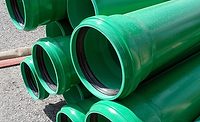New Standards Available From ASTM

“Current methods for measuring volatiles from UV-curable coatings require that the material be coated on a substrate at the end-use thickness and cured per the manufacturer’s specification,” said Robin E. Wright, Staff Scientist, 3M Corporate Research Process Laboratory, and a member of D01.21. “The raw materials used in these coatings are not designed to be applied and cured alone, so there is no prescribed application thickness or cure condition. ASTM D 7767 provides the necessary specifications to repeatedly and reproducibly measure volatiles from these raw materials.”
Increasing interest in the various uses of electrical contacts is the leading impetus for the development of a proposed new standard, ASTM WK 34423, Specification for Electrodeposited Coatings of Palladium-Cobalt Alloy for Engineering Use. The proposed standard is being developed by Subcommittee B08.08 on Metallic Coatings, part of ASTM International Committee B08 on Metallic and Inorganic Coatings.
According to Sheikh H. Rahman, Lear Corp., and leader of the task group that is developing ASTM WK 34423, having a high temperature limit is an important advantage of palladium cobalt plating. “Currently, the highest temperature that can be achieved for an electrical contact is 165 to 170 °C through silver plating,” said Rahman. “The palladium cobalt plating will boost this temperature from 170 to 395 °C.”
Looking for a reprint of this article?
From high-res PDFs to custom plaques, order your copy today!






